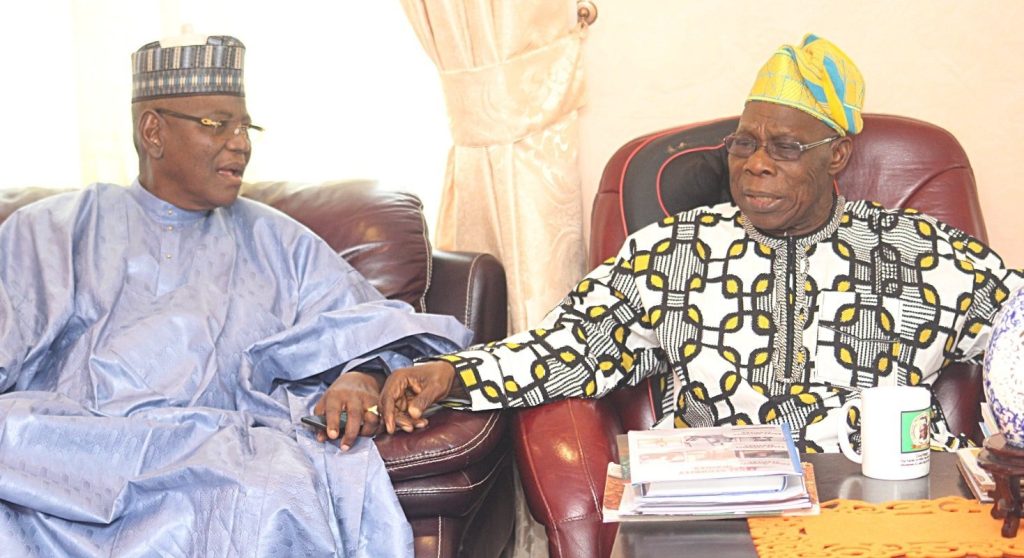Sule Lamido, a prominent figure in Nigerian politics, reveals the intricate political machinations that led to Olusegun Obasanjo’s emergence as the People’s Democratic Party (PDP) presidential candidate in 1999. In his autobiography, “Being True to Myself,” Lamido unveils the behind-the-scenes deliberations that prioritized national unity over regional interests, ultimately favoring Obasanjo over other Yoruba contenders like Olu Falae, Bola Ige, and Abraham Adesanya. Lamido argues that these other candidates were perceived as lacking the capacity to govern Nigeria fairly and effectively, potentially exacerbating ethnic tensions. The overarching goal, he emphasizes, was to find a “Yoruba Nigerian President,” a leader who transcended tribal affiliations and embodied a pan-Nigerian identity. This distinction, while seemingly subtle, was critical in the post-military transition, aiming to rebuild trust and foster a sense of shared national purpose.
The selection of Obasanjo, according to Lamido, was not merely a matter of ethnicity but a confluence of factors that underscored his suitability for the presidency. Key among these was his established reputation for integrity, cemented by his actions during the 1979 elections. Despite pressure from fellow Yoruba to favor Chief Awolowo, Obasanjo upheld Shehu Shagari’s victory, demonstrating his commitment to the rule of law. This act, while potentially alienating some within his ethnic group, solidified his image as a principled leader who prioritized national interests over tribal loyalties. This historical precedent served as a powerful testament to his character and reinforced his appeal as a potential unifier.
Furthermore, Obasanjo’s extensive military and political experience contributed significantly to his candidacy. His role as Chief of Staff, Supreme Headquarters during Murtala Muhammed’s regime, and his subsequent leadership of the country, provided him with invaluable insights into governance. This experience, coupled with his involvement in the Nigerian civil war, where he accepted the instrument of surrender from Biafran rebels, positioned him as a seasoned statesman capable of navigating complex national issues. These credentials resonated with a nation yearning for stability and strong leadership after years of military rule.
Lamido acknowledges the potential controversy surrounding Obasanjo’s selection, particularly within the Yoruba community. He notes that Obasanjo’s previous decisions, especially his refusal to support MKO Abiola’s claim to the presidency after the annulled 1993 elections, had generated resentment among some Yoruba. This historical baggage, coupled with Obasanjo’s perceived “bluntness,” presented a challenge for his acceptance within his own ethnic group. However, the PDP strategists believed that Obasanjo’s national stature outweighed these concerns, ultimately making him the most viable candidate to lead a fragile nation towards democracy.
The decision to support Obasanjo was also influenced by the counsel of retired generals within the PDP. They argued that Obasanjo enjoyed widespread trust among Nigerians, a crucial asset in the transition to civilian rule. Moreover, they viewed him as a prominent Yoruba figure with a national profile, someone who could bridge the divide between ethnic groups. This perspective underscored the strategic importance of selecting a candidate who could garner support across the diverse Nigerian landscape.
Lamido’s account paints a picture of a complex political landscape in which national unity was paramount. The selection of Obasanjo, while not without its detractors, was ultimately driven by a desire to find a leader who could transcend ethnic divisions and steer Nigeria toward a more stable and democratic future. This decision, rooted in pragmatic considerations and a commitment to national cohesion, underscores the delicate balancing act required to navigate the intricacies of Nigerian politics.


